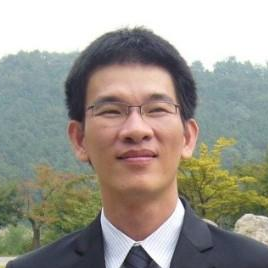RF Energy Harvesting and Wireless Power Transfer
A special issue of Electronics (ISSN 2079-9292). This special issue belongs to the section "Computer Science & Engineering".
Deadline for manuscript submissions: closed (15 December 2020) | Viewed by 18925
Special Issue Editors
Interests: UAV communications; internet of things; physical-layer security; network coding; non-orthogonal multiple access; RF energy harvesting; device-to-device communications; heterogeneous networks
Special Issues, Collections and Topics in MDPI journals
Interests: wireless and mobile networks; cooperative and energy harvesting networks; Internet of Things; cross-layer design; dynamic programming; game theory for wireless communications
Special Issue Information
Dear Colleagues,
Advanced radio frequency (RF) energy harvesting (EH) and wireless power transfer (WPT) technologies are paving the way towards future wireless networks. WPT via RF radiation has emerged as a promising approach to energise low-power devices in circuit design. While traditional wireless networks were designed only for data communications, the future of wireless communications allows both data and energy transmission, i.e., simultaneous wireless information and power transfer (SWIPT), using the same radio wave over the same wireless medium. Although EH and WPT have shown to be able to sustain the energy supply, enabling the development of numerous applications and services in various wireless network architectures, there are challenges in theoretical modeling, analyses and practical design that need to be addressed. This Special Issue aims to provide a comprehensive overview of state-of-the-art technologies and theories of EH and WPT in practical wireless networks.
Prospective authors are invited to submit original manuscripts on topics including, but not limited to:
- RF EH for low-power wireless transceiver circuits in communication systems;
- EH interface circuit design for light-weight devices;
- Antenna, waveform and signal design for EH and WPT;
- Network architecture and protocol design for RF EH and WPT;
- Analytical models of EH and WPT in network architecture design;
- RF EH and WPT in unicast, multicast, broadcast and relay channels;
- RF EH and WPT with cooperative communications, multiple-input multiple-output (MIMO), massive MIMO and mmWave technologies;
- SWIPT in wireless sensor networks, device-to-device communications, Internet-of-Things (IoT) and cellular networks (5G and beyond);
- Security in SWIPT systems;
- Experiment and prototype of RF EH, WPT and/or SWIPT.
Dr. Quoc-Tuan Vien
Dr. Ca V. Phan
Dr. Antonino Masaracchia
Guest Editors
Manuscript Submission Information
Manuscripts should be submitted online at www.mdpi.com by registering and logging in to this website. Once you are registered, click here to go to the submission form. Manuscripts can be submitted until the deadline. All submissions that pass pre-check are peer-reviewed. Accepted papers will be published continuously in the journal (as soon as accepted) and will be listed together on the special issue website. Research articles, review articles as well as short communications are invited. For planned papers, a title and short abstract (about 100 words) can be sent to the Editorial Office for announcement on this website.
Submitted manuscripts should not have been published previously, nor be under consideration for publication elsewhere (except conference proceedings papers). All manuscripts are thoroughly refereed through a single-blind peer-review process. A guide for authors and other relevant information for submission of manuscripts is available on the Instructions for Authors page. Electronics is an international peer-reviewed open access semimonthly journal published by MDPI.
Please visit the Instructions for Authors page before submitting a manuscript. The Article Processing Charge (APC) for publication in this open access journal is 2400 CHF (Swiss Francs). Submitted papers should be well formatted and use good English. Authors may use MDPI's English editing service prior to publication or during author revisions.







